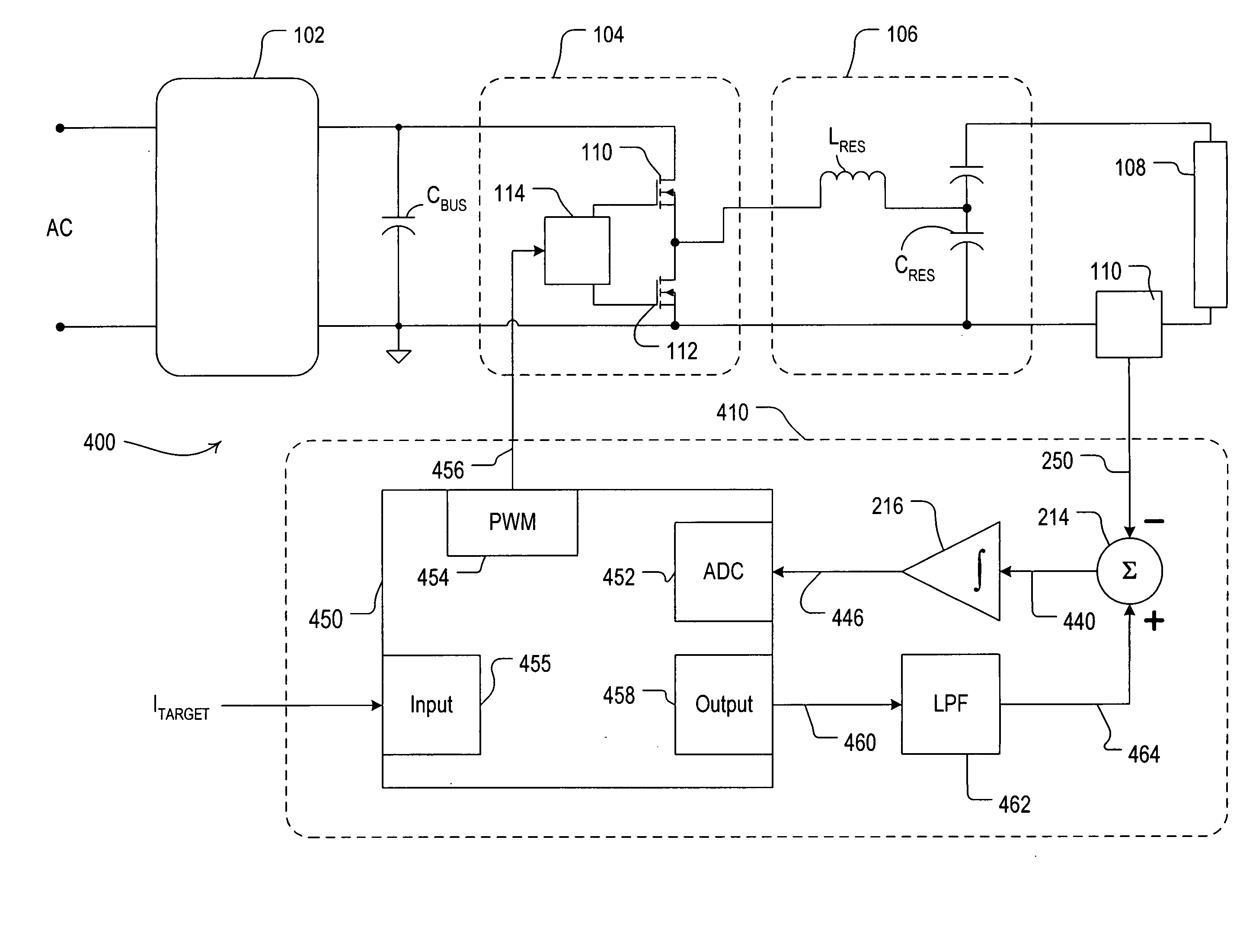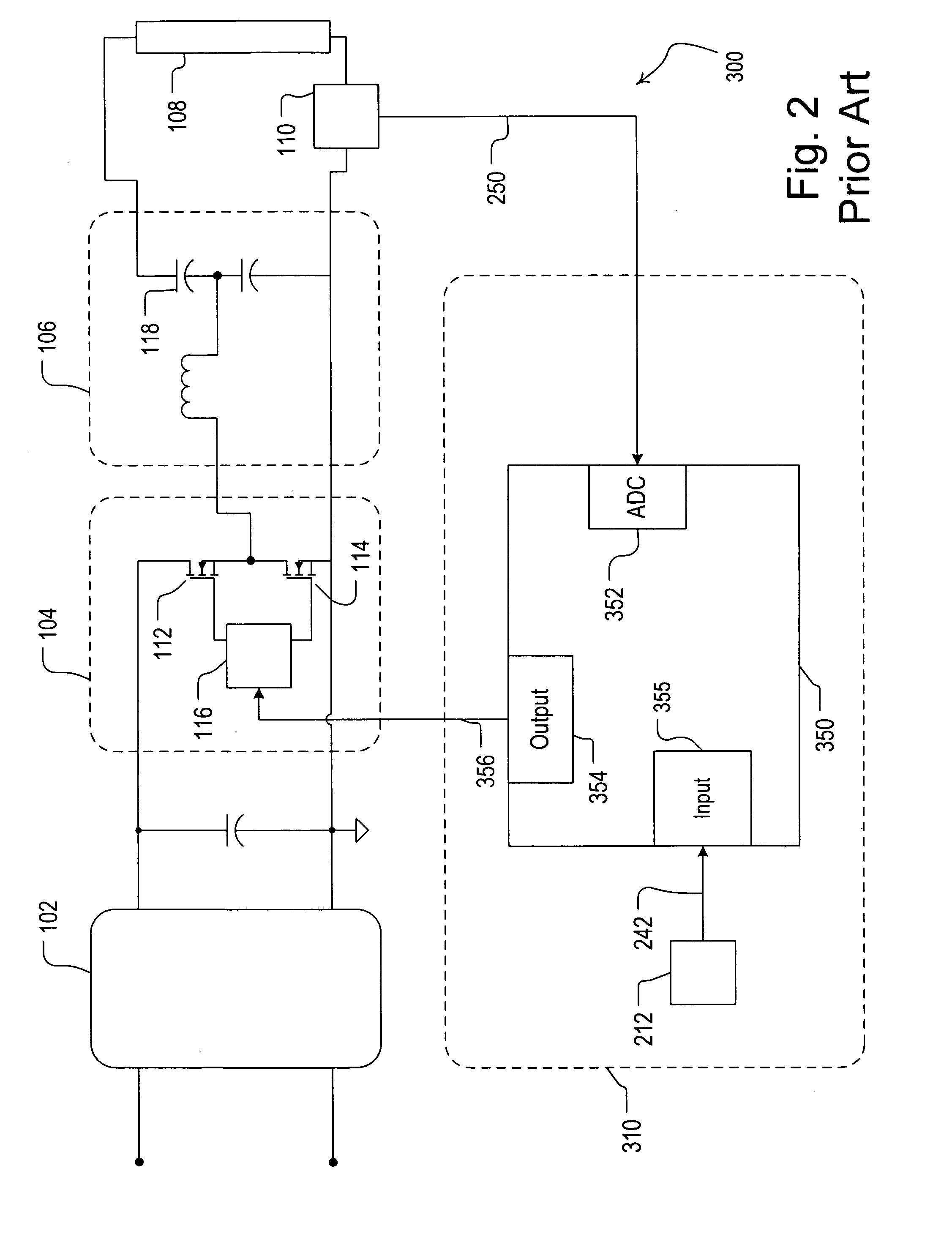Electronic ballast having adaptive frequency shifting
a technology of electronic ballasts and frequency shifting, applied in the field of electronic ballasts, can solve the problems of increased cost and complexity, noticeable flash, and higher cost of microprocessors, and achieve the effect of minimizing the target duty cycle and operating duty cycl
- Summary
- Abstract
- Description
- Claims
- Application Information
AI Technical Summary
Benefits of technology
Problems solved by technology
Method used
Image
Examples
second embodiment
[0059]FIG. 9 is a control system diagram illustrating the control loops of a ballast 900 according to the present invention. The ballast 900 is operable to control the operating frequency of the ballast in response to only the operating duty cycle and the target duty cycle. In this embodiment, the ballast 900 is not operable to control the operating frequency in dependence upon the target lamp current. The ballast 900 is operable to drive the lamp 108 such that mercury pumping is avoided. However, when the target lamp current changes, the actual lamp current, and thus the lamp intensity, changes at a slower rate than in the previous embodiment, since the operating frequency control loop, i.e., the duty cycle error value ed, is solely in control of the operating frequency.
[0060]FIG. 10 is a flowchart of the software executed by the microprocessor of the ballast 900 to adaptively change the operating frequency fOP according to the second embodiment of the present invention. Steps 1002...
third embodiment
[0062]FIG. 11 is a simplified schematic diagram of a ballast 1100 according to the present invention. The ballast 1100 has an entirely analog control circuit 1110, with a control loop for control of the operating duty cycle dOP and another control loop for control of the operating frequency fOP. The components of the duty cycle control loop, i.e., the reference circuit 212, the summing circuit 214, and the compensator circuit 216, operate the same way as those components of the analog control circuit 210 of the prior art ballast 100 to produce a PWM signal 1170 characterized by the operating duty cycle dOP and the operating frequency fOP at the output of the comparator 220.
[0063] However, the analog control circuit 1110 uses the operating duty cycle dOP as feedback to determine the operating frequency fOP. The PWM signal 1170 is provided to a low pass filter (LPF) 1172 to produce a first DC reference signal 1174 representative of the duty cycle of the PWM signal 1170. A reference ci...
PUM
 Login to View More
Login to View More Abstract
Description
Claims
Application Information
 Login to View More
Login to View More - R&D
- Intellectual Property
- Life Sciences
- Materials
- Tech Scout
- Unparalleled Data Quality
- Higher Quality Content
- 60% Fewer Hallucinations
Browse by: Latest US Patents, China's latest patents, Technical Efficacy Thesaurus, Application Domain, Technology Topic, Popular Technical Reports.
© 2025 PatSnap. All rights reserved.Legal|Privacy policy|Modern Slavery Act Transparency Statement|Sitemap|About US| Contact US: help@patsnap.com



